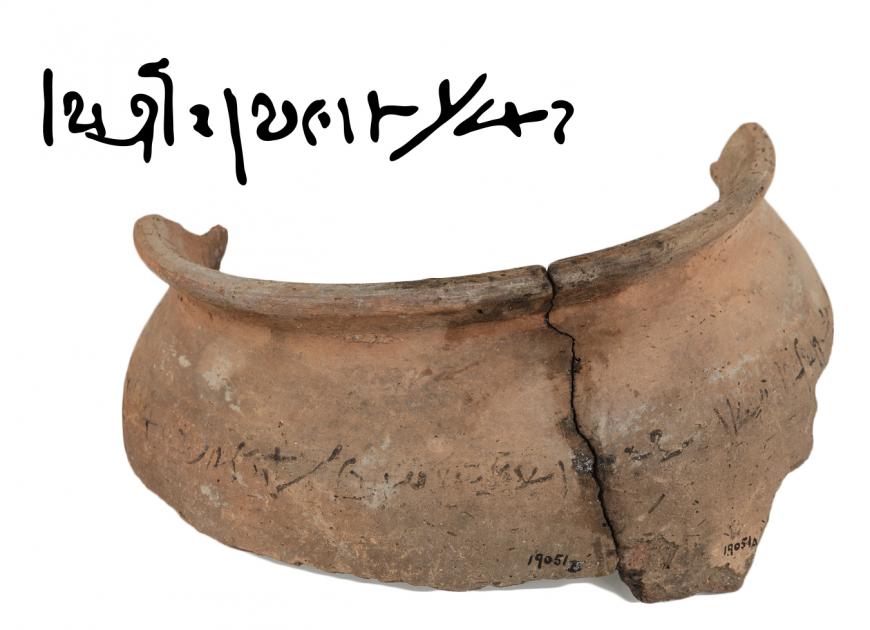The Institute for the Study of Ancient Cultures Museum houses a large collection of nearly 900 Demotic ostraca, pottery sherds upon which ancient scribes recorded a wide variety of text types. The vast majority of the corpus concerns economic matters and consists of receipts, contracts, memos, and lists, but there is a small selection of other genres such as votive and astrological texts. With few exceptions, the material derives from the environs of Thebes and over half of the collection derives from the Institute for the Study of Ancient Cultures excavations at Medinet Habu. Attested dates in the documents range from the early Ptolemaic Period (circa 285 BCE) to the early Roman Period (circa 80 CE). Less than one third of the corpus has been published:
- 160 ostraca in Miriam Lichtheim, Demotic Ostraca from Medinet Habu, Oriental Institute Publications 80 (Chicago: University of Chicago Press, 1957)
- 61 ostraca in Brian P. Muhs, Tax Receipts, Taxpayers, and Taxes in Early Ptolemaic Thebes, Oriental Institute Publications 126 (Chicago: Oriental Institute, 2005)
- 42 ostraca in Brian P. Muhs, Foy D. Scalf, and Jacqueline E. Jay, The Archive of Thotsutmis, Son of Panouphis: Early Ptolemaic Ostraca from Deir el Bahari (O. Edgerton), Oriental Institute Publications 146 (Chicago: Oriental Institute, 2021)
- Several dozen ostraca have been published in the articles of Ursula Kaplony-Heckel and Otto Neugebauer
The database was developed as both a scholarly research tool and a means for the publication of the unpublished Demotic ostraca. It is our aim to make available all of the Demotic ostraca in this collection, both published and unpublished, to scholars worldwide in a format that will allow for complex searching and sorting criteria as well as quick and easy updating. This will be accomplished through periodic updates as additional texts are edited and entered into the database.
The principal investigator is Foy Scalf, in collaboration with Brian Muhs and Jacqueline Jay. Volunteer assistance, editorial help, and data entry has been provied by NELC graduate students Theresa Tiliakos, Ella Karev, and Rebecca Wang.
Updates:
- 2023: Project renamed for institutional name change.
- 2021: Added transliteraitons and translations from O. Edgerton to ISAC collections database. Added links to ISAC collections database for ostraca published in O. Edgerton and O. Taxes 1.
- 2019: OIDOO migrated to the OCHRE platform. Launch ISACM Demotic Ostraca here (*Use Edge or Chrome Browser as Firefox may not automatically launch Java app). OCHRE and OIDOO run on Java. We strongly recommend reading the OCHRE instructions at the linke below to ensure proper installation, setup, and use.
Instructions
Visit the OCHRE hompage to the see the manual, FAQ, and Wiki instructional.
Publications
- Brian P. Muhs, Foy D. Scalf, and Jacqueline E. Jay. The Archive of Thotsutmis, son of Panouphis: Early Ptolemaic Ostraca from Deir el Bahari (O. Edgerton). Oriental Institute Publications 146. Chicago: Oriental Institute, 2021.
- Foy Scalf. "An Embalmer's Bowl with Demotic Inscription (Oriental Institute Museum E9115)." In Essays for the Library of Seshat: Studies Presented to Janet H. Johnson on the Occasion of Her 70th Birthday, edited by Robert K. Ritner, pp. 311–323. Studies in Ancient Oriental Civilizations 70. Chicago: Oriental Institute, 2017.
- Foy Scalf. "Resurrecting an Ibis Cult: Demotic Votive Texts from the Oriental Institute Museum of the University of Chicago." In Mélanges offerts à Ola el-Aguizy, edited by Fayza Haikal, pp. 361–388. Bibliothèque d'Étude 164 (Cairo: IFAO, 2015), 361–388.
- Foy Scalf and Jacqueline Jay. "Oriental Institute Demotic Ostraca Online (OIDOO): Merging Text Publication and Research Tools." In Acts of the Tenth International Congress of Demotic Studies, edited by Mark Depauw and Yanne Broux, pp. 243–261. Orientalia Lovaniensia Analecta 231. Leuven: Peeters, 2014.
- Foy Scalf and Jacqueline Jay. "Accounting for Life in Ptolemaic and Roman Thebes: Online Access to Ancient Archives." Oriental Institute News & Notes 200 (Winter 2009), 13–17.

No comments:
Post a Comment